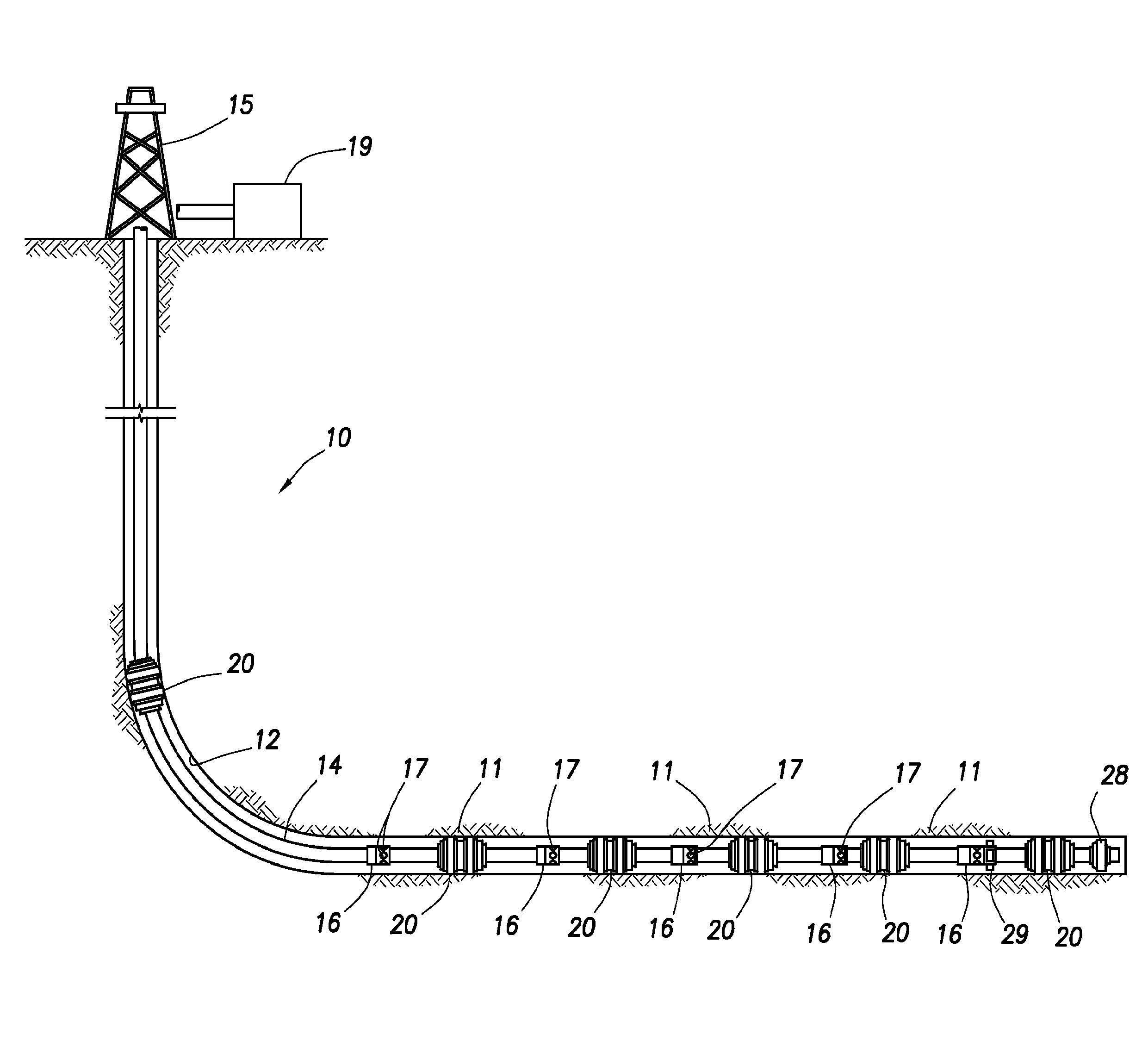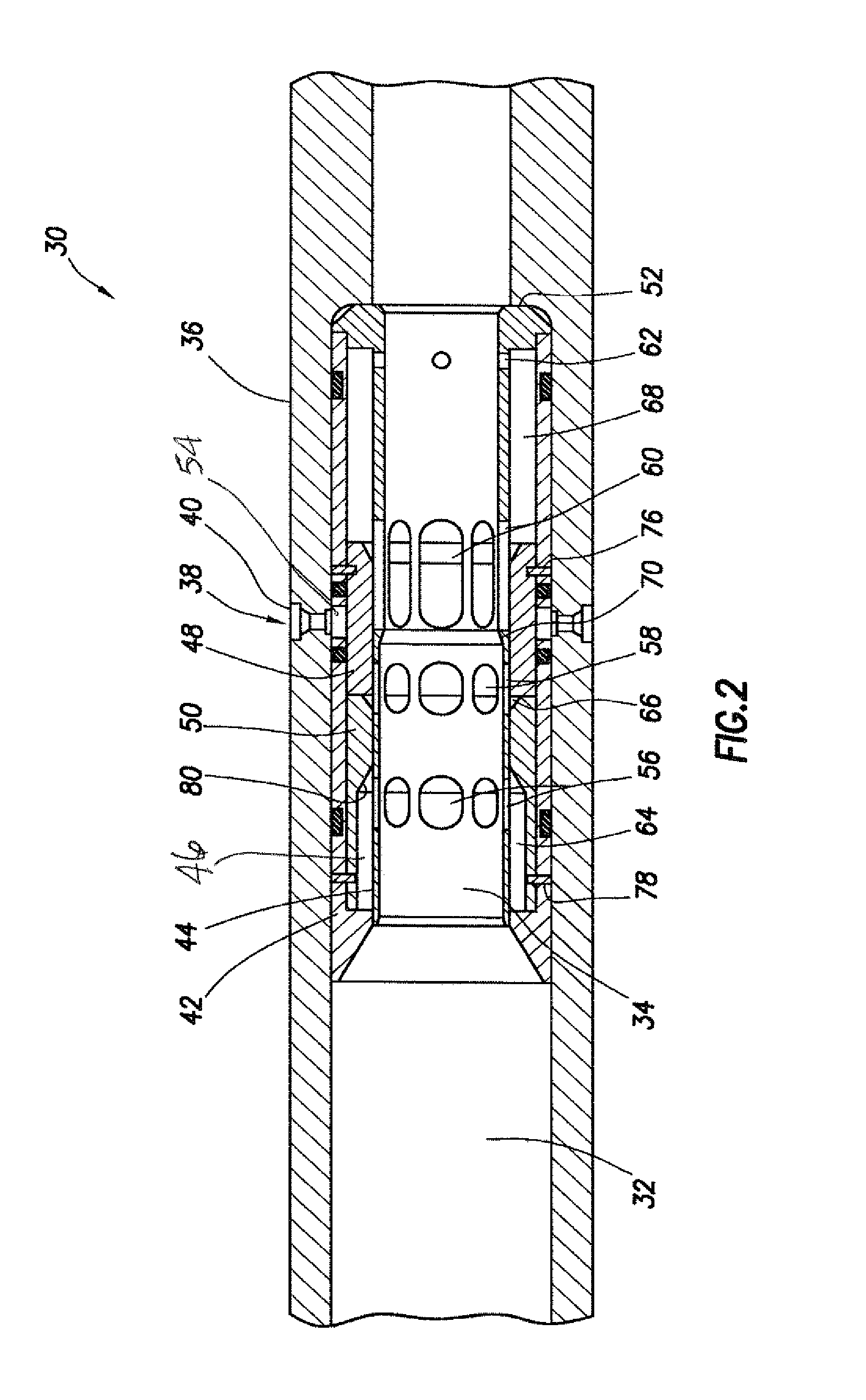Sliding sleeve bypass valve for well treatment
a technology of sliding sleeve and bypass valve, which is applied in the direction of sealing/packing, drilling machines and methods, and wellbore/well accessories, etc., can solve the problems of limited number of balls that can be run in a single tubing string, and achieve the effect of reducing the risk of accidental sleeve actuation, avoiding accidental shifting or “skipping” of sleeve positions, and avoiding accidental sleeve actuation
- Summary
- Abstract
- Description
- Claims
- Application Information
AI Technical Summary
Benefits of technology
Problems solved by technology
Method used
Image
Examples
Embodiment Construction
[0014]While the making and using of various embodiments of the present invention are discussed in detail below, a practitioner of the art will appreciate that the present invention provides applicable inventive concepts which can be embodied in a variety of specific contexts. The specific embodiments discussed herein are illustrative of specific ways to make and use the invention and do not limit the scope of the present invention. The description is provided with reference to a horizontal wellbore. However, the inventions disclosed herein can be used in horizontal, vertical, or deviated wellbores. As used herein, the words “comprise,”“have,”“include,” and all grammatical variations thereof are each intended to have an open, non-limiting meaning that does not exclude additional elements or steps. The terms “uphole,”“downhole,” and the like, refer to movement or direction closer and farther, respectively, from the wellhead, irrespective of whether used in reference to a vertical, hor...
PUM
 Login to View More
Login to View More Abstract
Description
Claims
Application Information
 Login to View More
Login to View More - R&D
- Intellectual Property
- Life Sciences
- Materials
- Tech Scout
- Unparalleled Data Quality
- Higher Quality Content
- 60% Fewer Hallucinations
Browse by: Latest US Patents, China's latest patents, Technical Efficacy Thesaurus, Application Domain, Technology Topic, Popular Technical Reports.
© 2025 PatSnap. All rights reserved.Legal|Privacy policy|Modern Slavery Act Transparency Statement|Sitemap|About US| Contact US: help@patsnap.com



